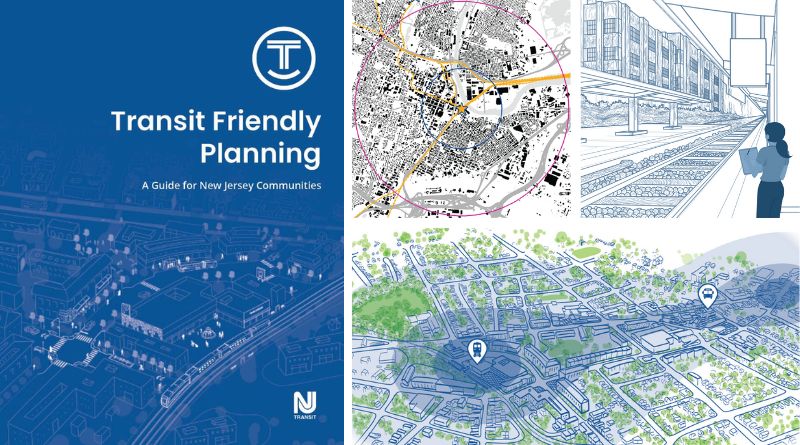With a goal of supporting sustainable and affordable lifestyles through accessible mobility, NJ TRANSIT’s Transit Friendly Planning: A Guide for New Jersey Communities seeks to empower diverse stakeholders in making land use decisions that support and encourage transit use. Communities can create places centered around transit facilities—stations and stops—through density and efficient circulation patterns. Transit-friendly planning comprises many aspects and utilizes many tools including design, transit-oriented and mixed-use development, Complete Streets, and high-quality public spaces, to name a few. The approach allows municipalities and their residents to enjoy increased accessibility, affordability, improved health, and feelings of community. New Jersey, served by the nation’s third largest transit provider operating in the nation’s most densely populated state, can benefit from taking a transit friendly approach to planning. But truly, the lessons offered can serve stakeholders in any location with public transportation.
Organized in five chapters, the Guide offers insights, examples, and tools for making better land use decisions. The Guide begins a review of transit-friendly principles, a look at NJ TRANSIT’s Transit Friendly Planning program and what it can offer to communities, and introduces the all-important Transit Friendly Checklist for Communities—a tool designed to help municipalities assess the state of planning around local transit facilities.
In Chapter 2, the Guide focuses on design and development and explores ways to enhance the built environment in five New Jersey place types: Urban Centers, Urban Neighborhoods, Town Centers, Suburban Places, and Rural Places. Central to all is designing a welcoming public realm, offering a mix of residential and commercial uses, ensuring safe sidewalks, and providing good access to transit facilities. The Guide also promotes incorporating active street fronts, balancing building heights and street widths, mixing uses at the block and parcel levels, accommodating peak and off-peak ridership to ensure constant activity, enhancing public safety, and attracting diverse users to the area near transit facilities.

In Chapter 3, the Guide addresses access, circulation, and parking and discusses how good access to stations and stops by all modes—walking, biking, rolling, driving, micromobility, and transit—support successful transit systems. Key concepts explored include convenient transfers between modes, context-sensitive parking strategies such as shared parking and parking maximums, and curbside management policies that promote sharing space for freight and commercial vehicles, pick-up/drop-off zones, and other uses.
In Chapter 4, the Guide turns to active transportation i and considers how biking, walking, and rolling supports transit networks. It advocates for the adoption and implementation of Complete Streets policies to improve access and safety, and to promote environmental justice and equity goals. It also explores the connection between transit facilities and well-designed trails, and how supporting these linkages can improve access to open space and recreation, and foster tourism.
Finally, Chapter 5 of the Guide offers numerous case studies that highlight local examples in each of the five place types as well as a national example focused on corridor planning. It also provides recommendations for implementation.
Comprehensive, easy to use, and immensely valuable, the Guide offers strategies and tools that support sustainable and affordable living through transit friendly planning. It is designed to empower local stakeholders; we recommend that you use it to shape the future of your community.

